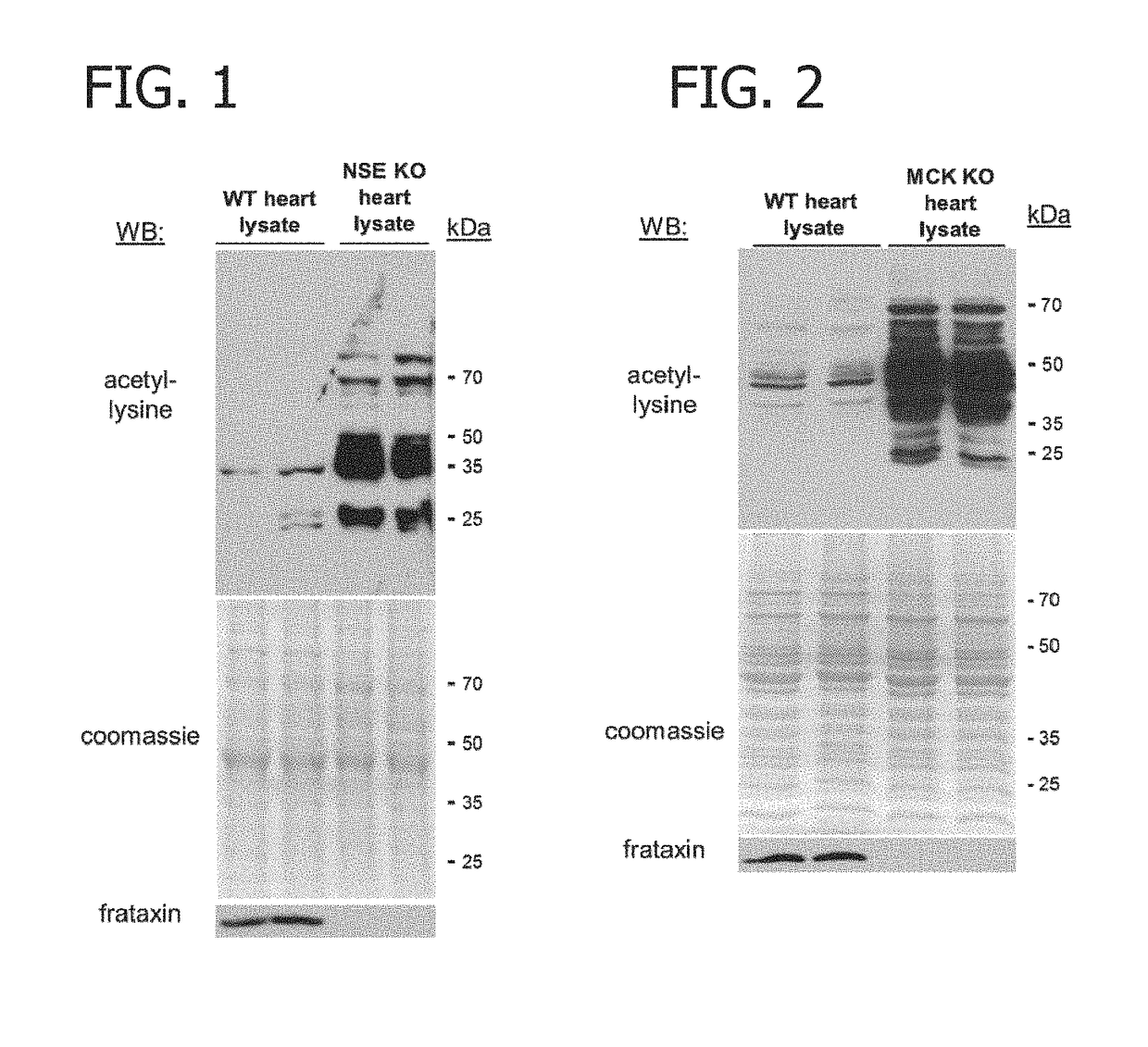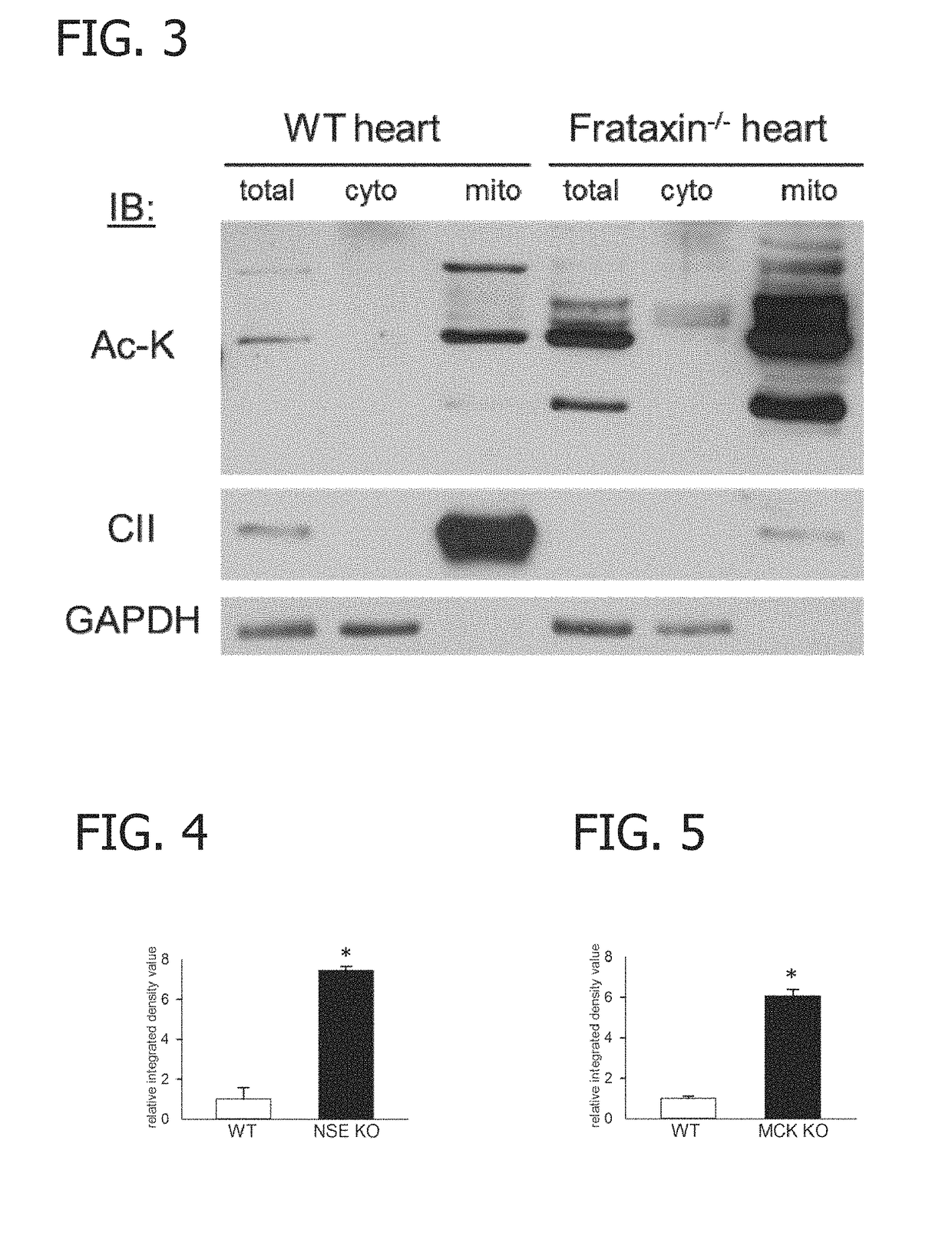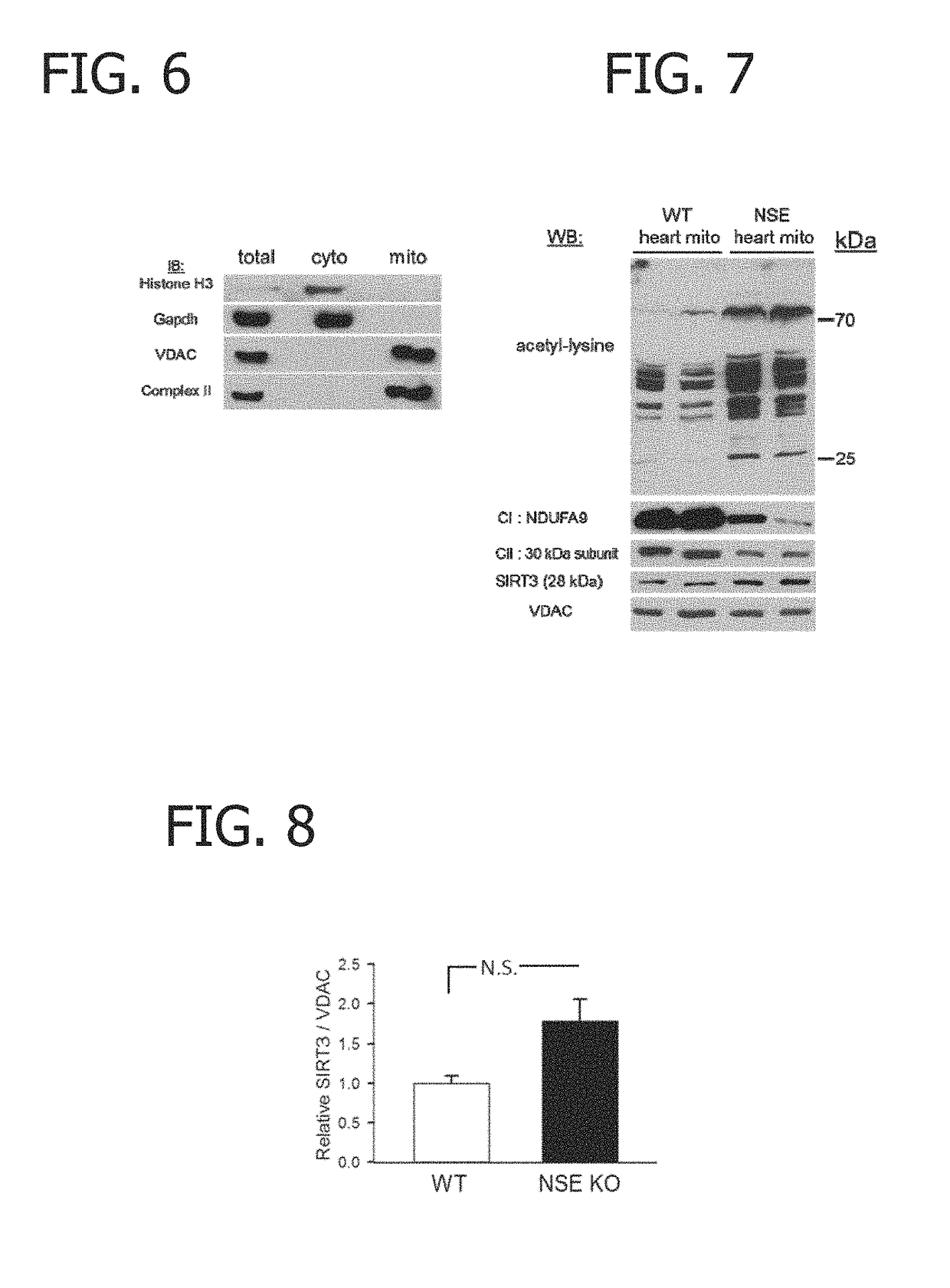Biomarker for determining mitochondrial damage in friedreich's ataxia
a biomarker and ataxia technology, applied in the field of biomarkers for determining mitochondrial damage in friedreich's ataxia, can solve the problems of pathological deficiency, compromising both cellular respiration and overall mitochondrial function, and affecting so as to achieve the effect of reducing the acetylation of mitochondrial proteins
- Summary
- Abstract
- Description
- Claims
- Application Information
AI Technical Summary
Benefits of technology
Problems solved by technology
Method used
Image
Examples
example
Example 1
Materials and Methods
[0058]Frataxin Conditional Knockout Mouse Breeding and Genotyping.
[0059]Mice were obtained from Helene Puccio and bred as described previously to generate the NSE and MCK-Cre conditional knockout animals. PCR was used to detect the presence of a 500 bp product of exon 4 and a 790 bp product of the Cre transgene for genotyping. Mice that were genotyped as FrdaL3 / Δ, Cre+ represent the conditional knockout animals.
[0060]Mouse Tissue Preparation.
[0061]For the isolation of whole heart homogenate, animals were sacrificed by CO2 asphyxiation and the tissue was immediately excised, washed and minced in cold phosphate-buffered saline. The tissue was then placed in 1-2 ml of ice-cold complete RIPA buffer containing an EDTA-free protease inhibitor cocktail (Roche product #05056489001), and 10 mM nicotinamide (NAM), 200 nM Trichostatin A, and 5 mM sodium butyrate as deacetylase inhibitors. The tissues were then homogenized with at least 10 passes of a motor-driven ...
example 2
[0076]In this Example, NSE- and MCK-Cre conditional mouse models for Friedreich's Ataxia (FRDA) were analyzed for protein acetyl-lysine modifications.
[0077]Specifically, whole heart lysates from wild-type (WT), NSE, and MCK conditional mouse models of FRDA were analyzed by Western blot analysis to assay protein acetyl-lysine modifications. As shown in FIGS. 1 and 2, heart lysates from both the NSE (NSE KO) and MCK (MCK KO) mouse models of FRDA exhibited marked increases in acetyl-lysine modifications as compared to age-matched control hearts. As demonstrated in FIG. 3, hyperacetylation was localized to cardiac mitochondria. As shown in FIGS. 4 and 5, the increases in acetyl-lysine modifications as compared to age-matched control hearts were statistically significant. The differences were most dramatic in proteins with an estimated molecular weight between approximately 30 and 75 kDa (FIGS. 1 and 2.)
example 3
[0078]In this Example, sub-fractionation of heart samples was performed to determine the sub-cellular distribution of hyperacetylated proteins.
[0079]Analysis of the purity of these mitochondrial preparations using antibodies to Historic H3 (a cytoplasmic marker), Gapdh (a cytoplasmic marker), VDAC (a mitochondrial marker) and Complex II (a mitochondrial marker) showed that nuclear and cytosolic proteins were excluded and they were highly enriched for markers of both the outer and inner mitochondrial membranes (FIG. 6). Using day 24 wild-type (WT, n=2) control and NSE-Cre frataxin-deficient cardiac mitochondrial preparations (n=2), Western blot analysis was performed for acetyl-lysine modifications.
[0080]Control cardiac mitochondria exhibited several acetylated proteins detectable by Western blot. However, frataxin-deficient cardiac mitochondria displayed marked hyperacetylation of numerous proteins (FIGS. 3 and 7). This was accompanied by a characteristic downregulation of respirato...
PUM
| Property | Measurement | Unit |
|---|---|---|
| pH | aaaaa | aaaaa |
| total volume | aaaaa | aaaaa |
| total volume | aaaaa | aaaaa |
Abstract
Description
Claims
Application Information
 Login to View More
Login to View More - R&D
- Intellectual Property
- Life Sciences
- Materials
- Tech Scout
- Unparalleled Data Quality
- Higher Quality Content
- 60% Fewer Hallucinations
Browse by: Latest US Patents, China's latest patents, Technical Efficacy Thesaurus, Application Domain, Technology Topic, Popular Technical Reports.
© 2025 PatSnap. All rights reserved.Legal|Privacy policy|Modern Slavery Act Transparency Statement|Sitemap|About US| Contact US: help@patsnap.com



